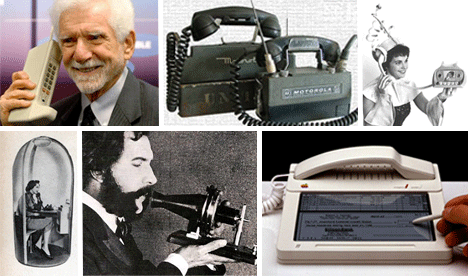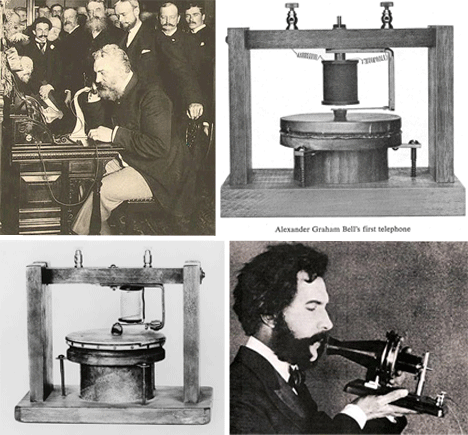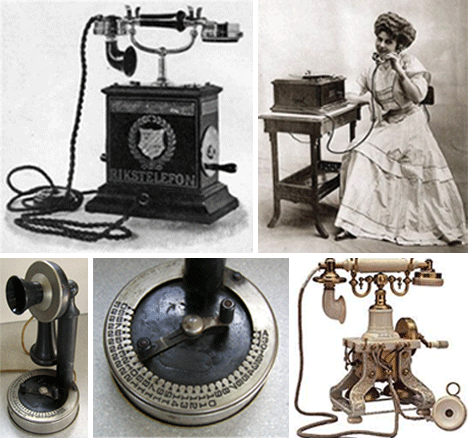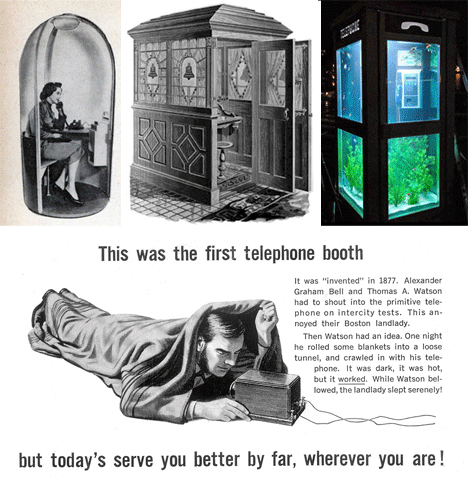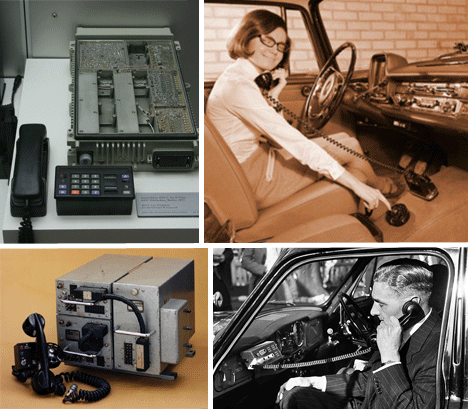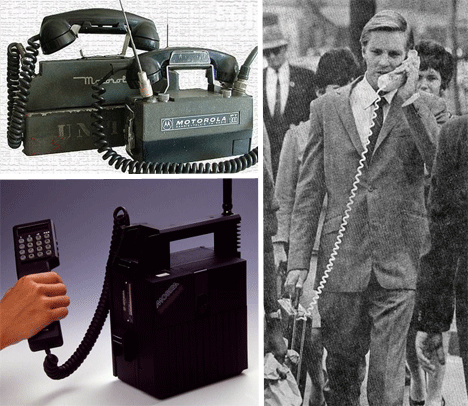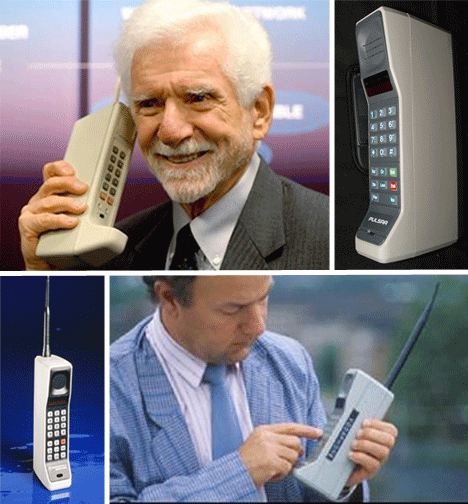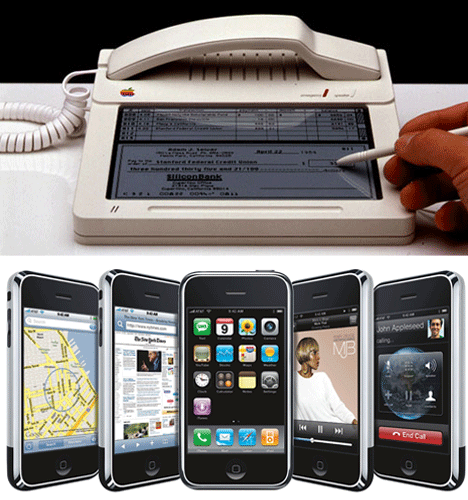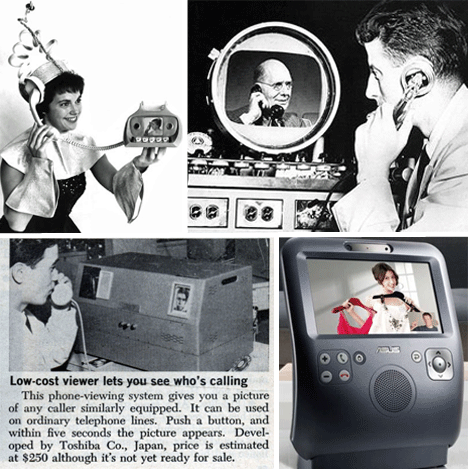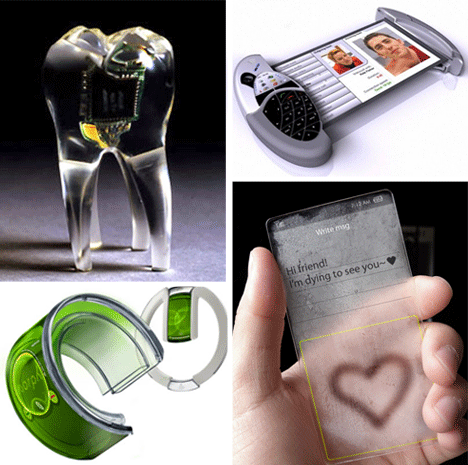There are three things most people have on them at all times: keys, wallet, and phone. Considering how integral phones are to our lives, it’s strange to think how quickly they’ve risen from being only landlines, to the size of backpacks, to thinner than our wallet (and smarter than our old computer). Here’s a tour through the history of phones – a revealing look at the past and future of one of our most celebrated technological companions:
The First Phones
(Images via lifethinking, porticus, pmptoday)
The first telephones were a purely scientific endeavor, with little thought to aesthetics. The entire focus of these first creations was to come up with a replacement for the primitive telegraph. Alexander Graham Bell is credited with the invention of the first working telephone, though there is controversy over who actually received the patent first: Bell, or another inventor, Elisha Gray, who came up with a model using similar technology. The first call was made from Bell to an assistant sitting 15 feet away on March 10, 1876, when Bell said, “Watson, come here, I want you.”
The Telephone Book
(Images via opengardens, 4thefirsttime)
When telephones first hit the market they were about as elite as a new technology can be. The first phonebook (pictured right), was a single sheet that didn’t even list the participant’s phone numbers (because how could you call them?). These early phonebooks are incredibly sought after collector’s items, an ironic change considering the much maligned yellow phone book of today.
Early Phones
(Images via myfinances, old-photos, oldphonerepair, connected-earth)
Early telephones were for the elite, and were so uncommon that they came in widely varying designs, nearly all ostentatious and victorian in appearance. It’s odd to think that the two handed design was the first attempt at a handset, and not the one handed design we’re now so used to.
Phone Booths
(Images via textually, 4thefirsttime, felixip, porticus)
Phone booths were once widely seen as the wave of the future, for they allowed you to call someone from the road (kind of), and how else would mobile calling ever be possible? The rise and fall of the phone booth was swift, and now they’re more an icon than something most people ever use. Chances are the next generation will only know about phone booths from cliched scenes in television and movies.
Car Phones
(Images via wikimedia, themotherhood, wearentfrench, darkroastedblend)
When phones went the least bit mobile, the amount of hardware required to accompany them required they be incorporated into a car so the heavy guts of the phone could reside in the trunk. This is an additional example of a technology that the next generation will find laughable, despite its revolutionary effect at the time.
Mobile Phones
(Images via textually, yesterdaysclues, fiercewireless)
The first truly mobile phones… were not very mobile, though better than their hulking car phone predecessors. A halting step towards true mobility, these behemoths weighed up to 10 pounds and were basically an extra briefcase. They carried a hefty price and weren’t widely available until slimmed down versions started hitting the market.
Handheld Phones
(Images via dialaphone, recoveryourlife, mobiletracker, madeintheshaide)
The mobile phone stunned the public, and was actually produced as a technology demonstration more than an actual attempt at cutting the landline. The industry was as shocked by the clamor for mobile phones as the public was shocked by them. They began their lives as what are now considered “brick” models, for their sturdy heft and blocky, angular appearance.
Smart Phones
(Images via onedigitallife, invokemedia)
Apple’s iPhone shocked the industry and spurred an onslaught of fierce smartphone competition, but Apple made a less well received foray into communications in 1983, when they came out with a stunningly advanced contribution to the typical landline – a touch screen.
Video Phones
(Images via techantropology, pixware, modernmechanix, sexygadgets)
Video phones were a consistent vision of the future of communication, but nobody took into account that one of the greatest benefits of talking on the phone is being able to communicate without having to worry about your appearance. The ability to multitask while on the phone is crucial, but videophones require you to be planted, and focused. Visions of the future of communication now mostly revolve around VOIP technology (calling via the internet).
The Future of Phones
(Images via nextnature, itechnews, handcellphone, whollysblog)
The modern telephone differs so wildly from the original conception, that it’s interesting to look forward and imagine where it will go from here. Some see the creation of Blue Tooth headsets as a forerunner of a phone that will be physically embedded inside of us, whereas others continue seeing it as a mini computer that’s used more as a mobile port to the internet. Will it be entirely moldable? Clear glass with infinite display options? Will it even require a receiver, or will it be with us all the time? Our great grandchildren will surely look back on the phones of their childhood with as much bewilderment as we do now.
